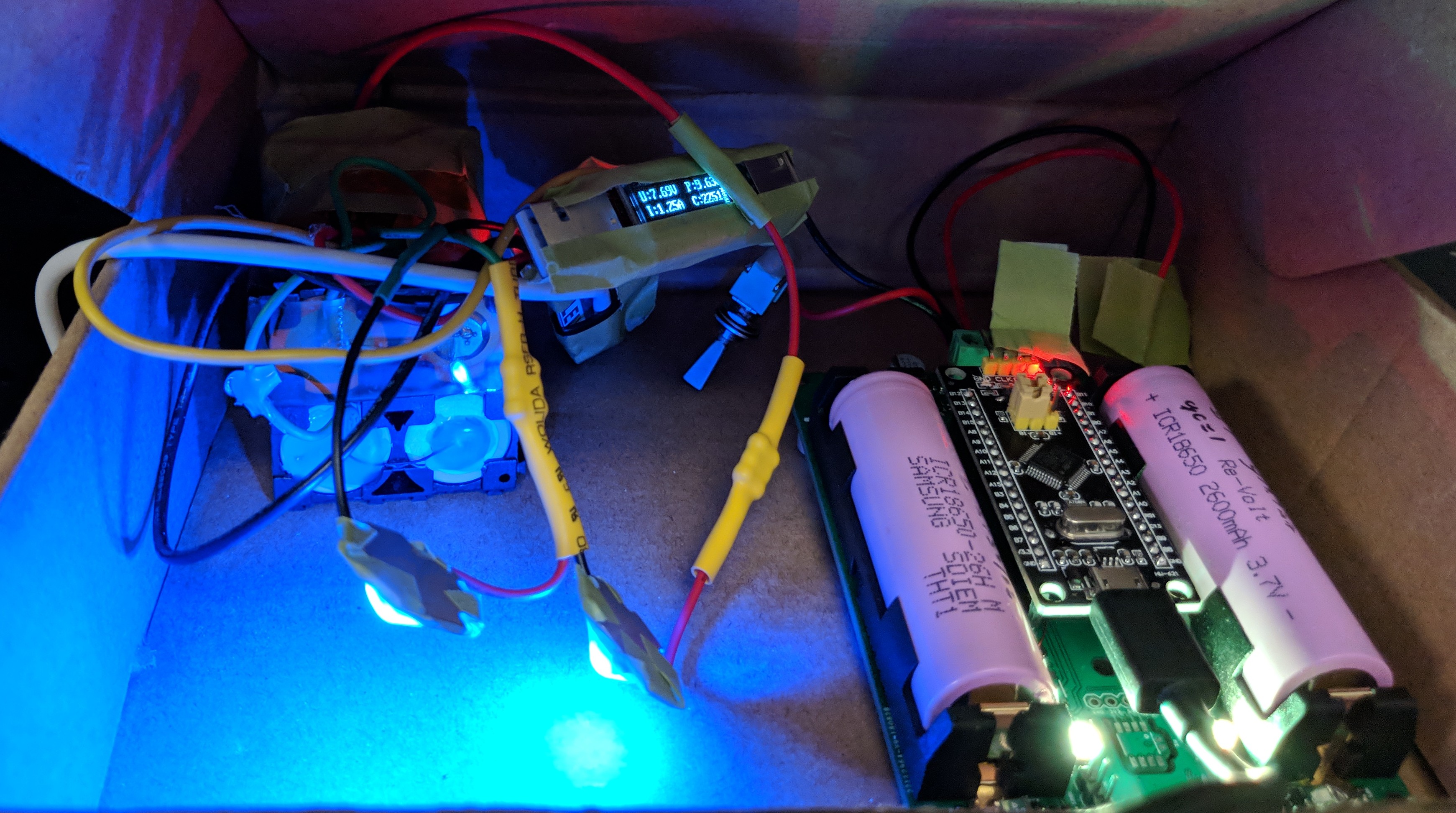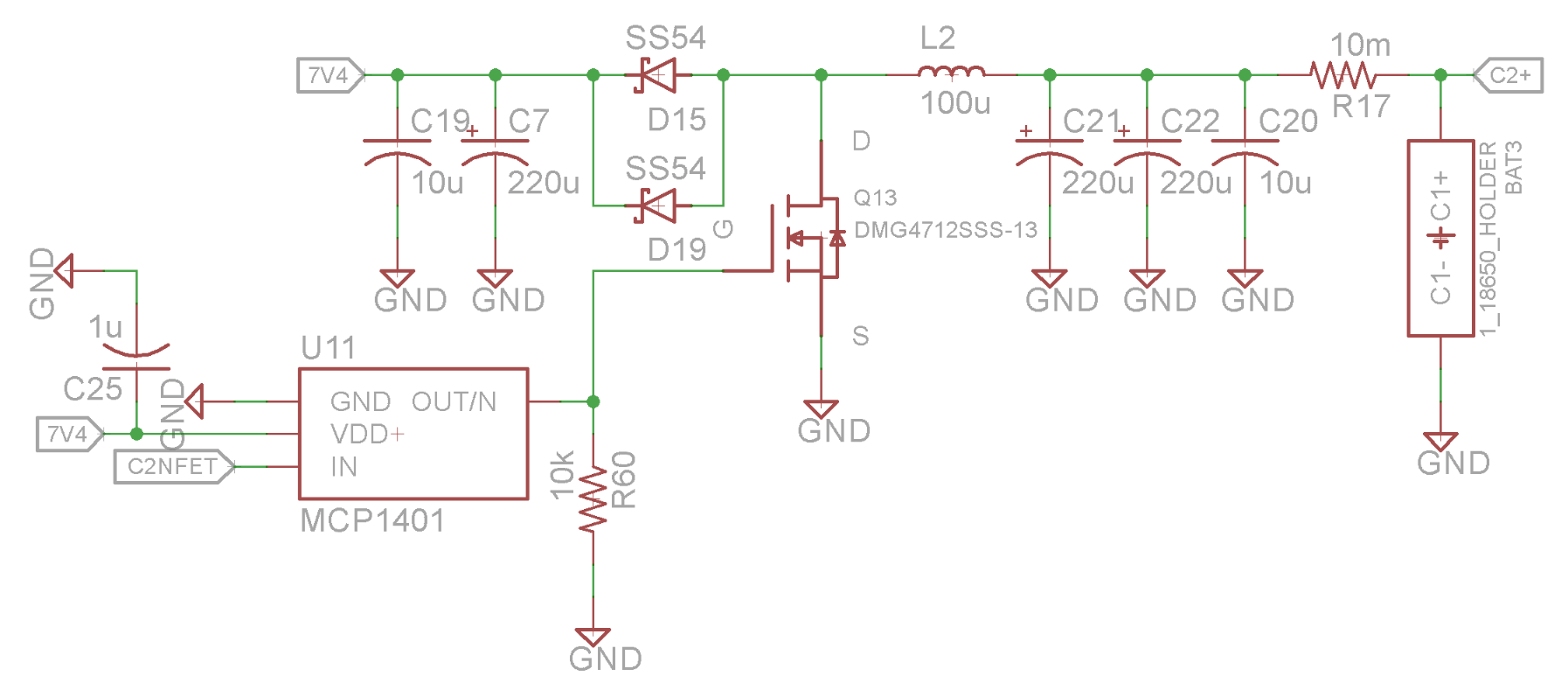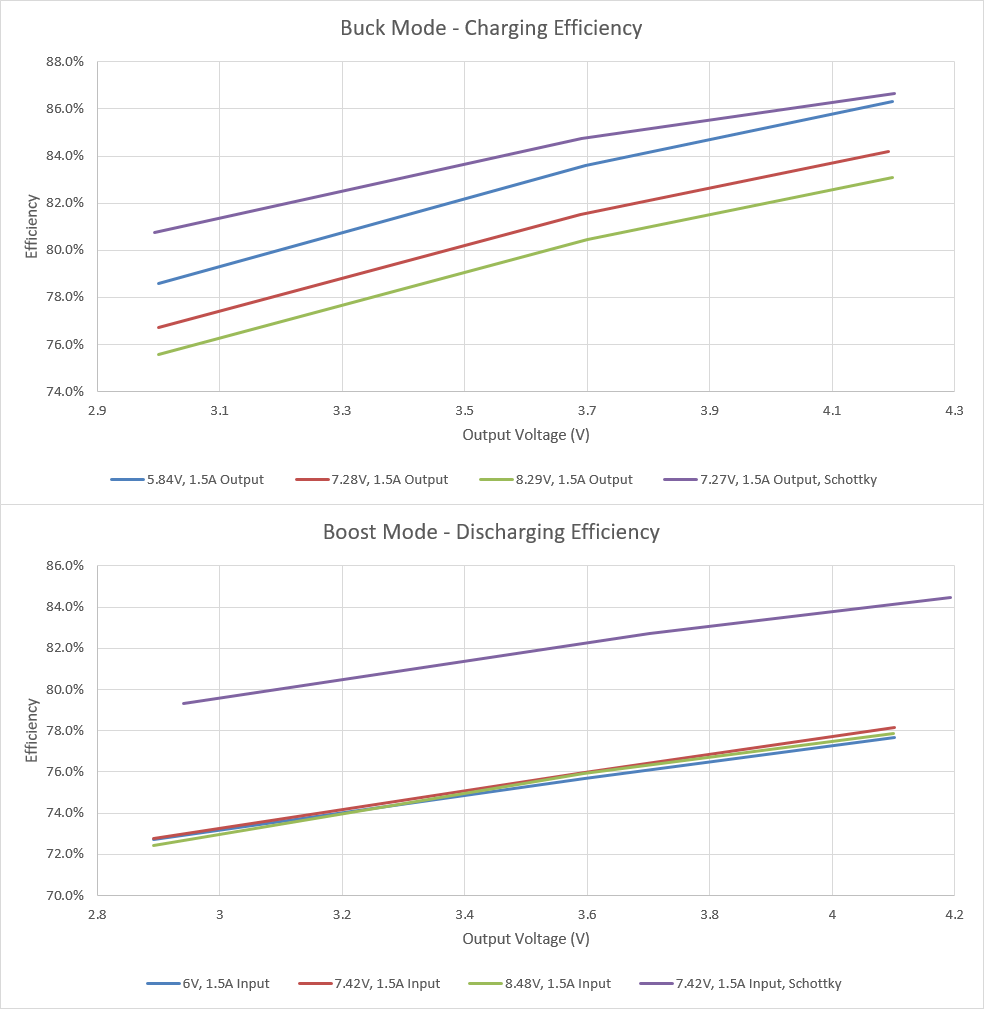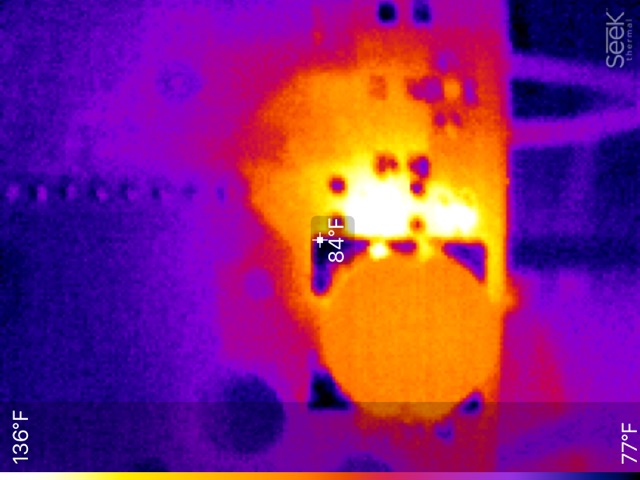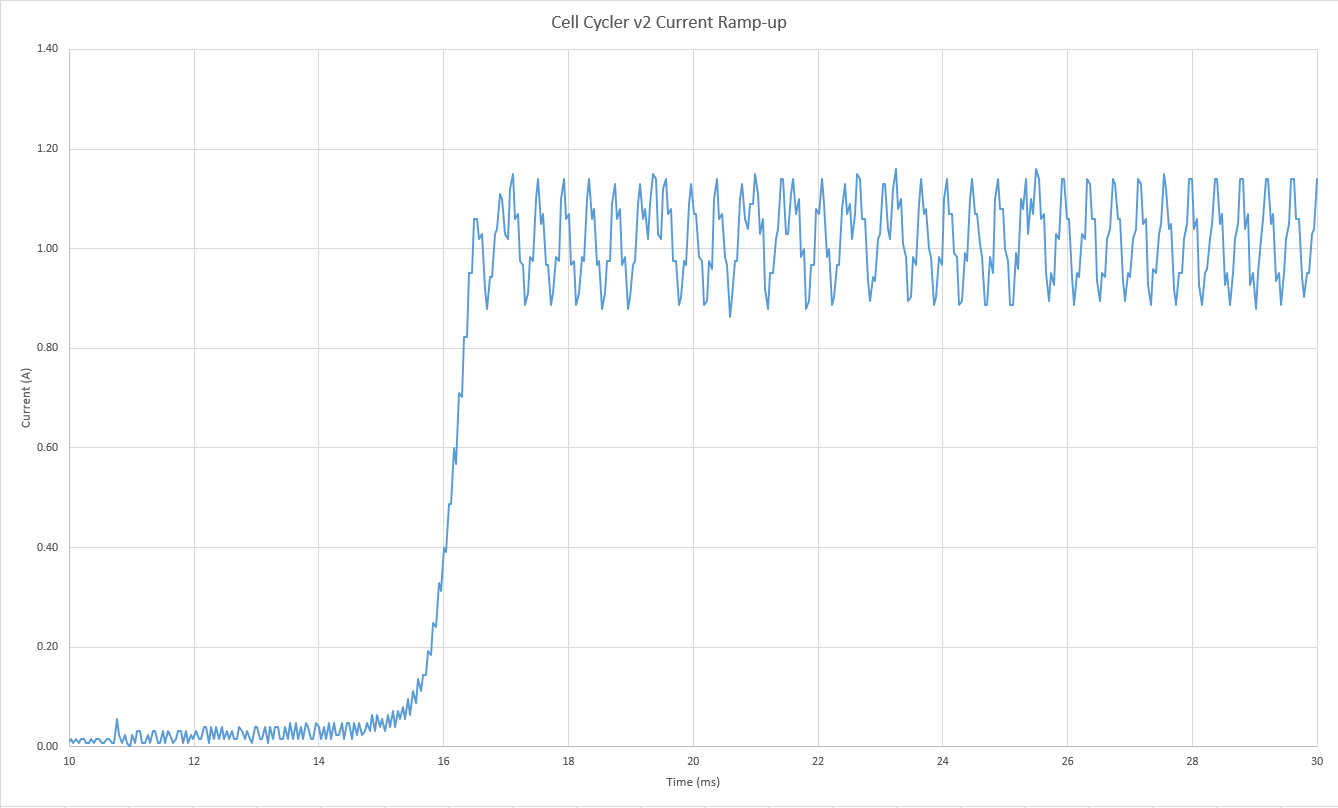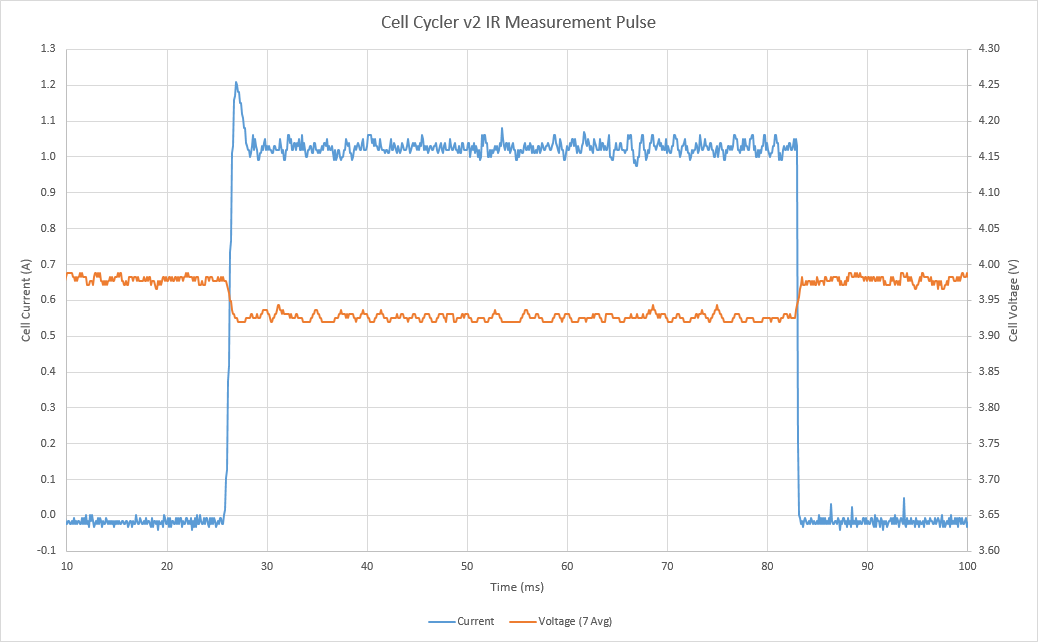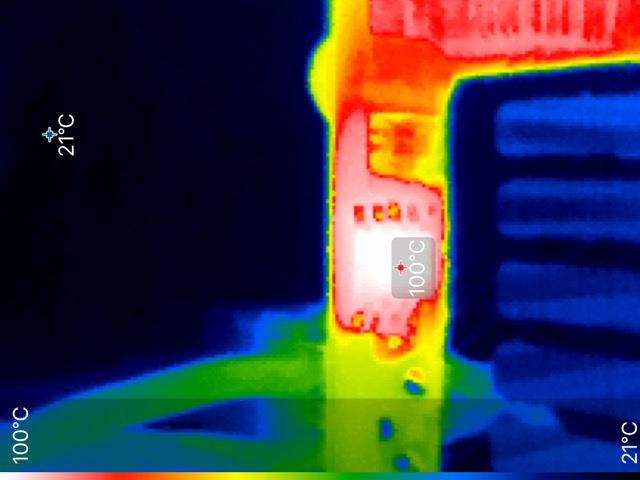Opus
This is an analysis/reverse engineering review of the Opus BT-C3100 v2.2 4-slot Li/Ni battery charger/tester.
List of Features
- Voltage Range (Charge): 0-4.35V
- Max Current (Charge): 2A (outer 2 slots simultaneous max, otherwise 1A)
- Max Current (Discharge): 1A
- Efficiency: 64.4% (charging, single slot at 2A, 3.8V)
- Modes: Charge, Discharge, Discharge Test (C/D/C), Quick Test (IR), Discharge Refresh (10 cycles)
- 6-7mA current resolution (4 digits), 10mV voltage resolution (3 digits), 1.64Hz update rate
Electronics
Buck Converter (Charger)
A simplified schematic of the buck converter that charges the battery from a 12V supply is shown in the thumbnail below:
The input is decoupled with a 1000uF/16V electrolytic capacitor, plus 10uF of MLCC for each cell. The charger consists of a EUP3484 340kHz 3A synchronous buck converter, which steps down the 12V to either 3.273V (in Ni* battery mode) or 6.326V (in Li* battery mode), with a 15uH inductor and 220uF 10V electrolytic output capacitor. This is switched through an AO3419 P-channel MOSFET rated for up to 3.5A drain current, <102mOhm resistance at 4.5Vgs, and up to 1.4W power dissipation. This ~20Hz PWM switched output is then fed through an SS34 schottky diode (3A, 40V, 0.4Vf at 2A), and 2 0.12 Ohm current sense resistors in parallel to the battery positive terminal.
Charge is terminated when the voltage exceeds 4.21V at 87mA average constant current (in 1A charge mode) or 18xmA average constant current (in 2A charge mode).
Resistor Discharger
A simplified schematic of the circuit that discharges the battery is shown in the thumbnail below:
The battery positive goes through 2 0.12 ohm current sense resistors in parallel, through an SS34 schottky diode (3A, 40V, 0.4Vf at 2A), and into 6 5.1 ohm resistors in parallel (0.85 ohms equivalent), switched through an AO3400 N-channel MOSFET rated for up to 5.8A drain current, <33mOhm resistance at 4.5Vgs, and up to 1.4W power dissipation. The PWM rate for the MOSFET is 20 Hz. The peak battery current for a 4.2V Li-Ion battery is approximately 4A pulsed, accounting for voltage drops in the diode, FET, and current sense resistors.
Discharge termination is when the Li-Ion battery reaches 2.70V at constant current. There is no rest period after discharge before charging begins.
CCR v1 Performance Evaluation
Microcontroller
The Opus BT-C3100 uses an unknown microcontroller that is wire bonded to the PCB, under a black epoxy blob.
Opus Performance Evaluation
The CCR v2 was assembled 2/15/19 and checked for basic operation cycle testing a Samsung 25R. Charging current is limited to approximately 2A due to power dissipation of the SOIC-8 P-channel MOSFETs. This may improve slightly with proper airflow routing using a 3D printed enclosure. Transient performance and current regulation were measured with a Rigol DS1052E. Discharge shows an overshoot of approximately 18% for 580us, and regulation of +/-3.8% at 1A. Charge shows no overshoot, and regulation of +/-3.9% at 1.5A.
Further investigation showed the MOSFET driver was not able to produce sharp edges, causing higher switching losses at 360 kHz. Changing the code to operate the MOSFETs at 180 kHz allows charging at up to 3.5A.
BOM Cost Estimate
| EE Component | Cost | Source |
| OPA335 Zero-Drift Amplifier (qty 2) | $2.42 | LCSC |
| MCP1402 MOSFET Driver (qty 4) | $1.83 | LCSC |
| STM32F103 "Blue Pill" | $1.82 | Aliexpress |
| NCS199A1 Current Sense Amplifier (qty 2) | $1.45 | LCSC |
| 18650 SMT Holder (qty 2) | $1.23 | Aliexpress |
| N-channel MOSFET 13A 11.5mOhm SOIC-8 (qty 4) | $0.52 | LCSC |
| rBOM (under $0.41) | $4.76 | LCSC |
| PCB | $2.00 | JLCPCB |
| Assembly | $7.10 - $31.70 | PCBgogo |
| HW Component | Cost | Source |
| 100x40x20 Aluminum Heatsink | $3.02 | eBay |
| 40x40x20 5V Fan | $1.60 | eBay |
| Misc HW (Under $0.22) | $0.42 | Aliexpress/eBay |
| Total Price | $52.41 (Assembly cost $317, batch qty 10) |
